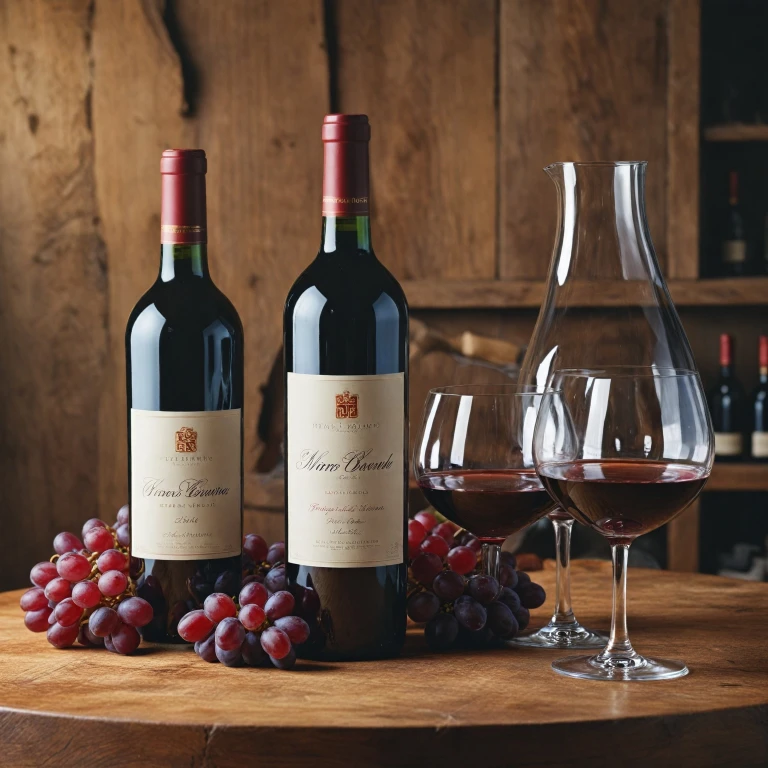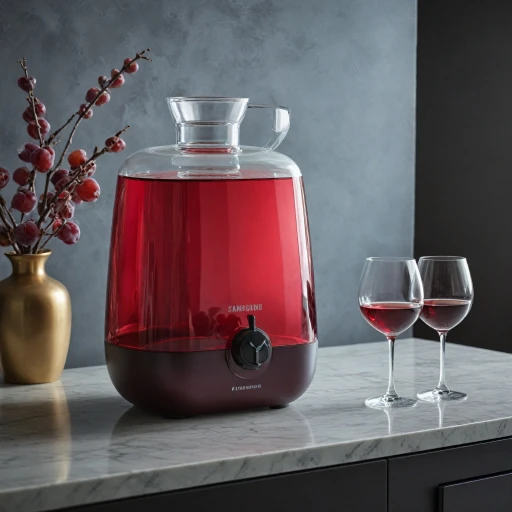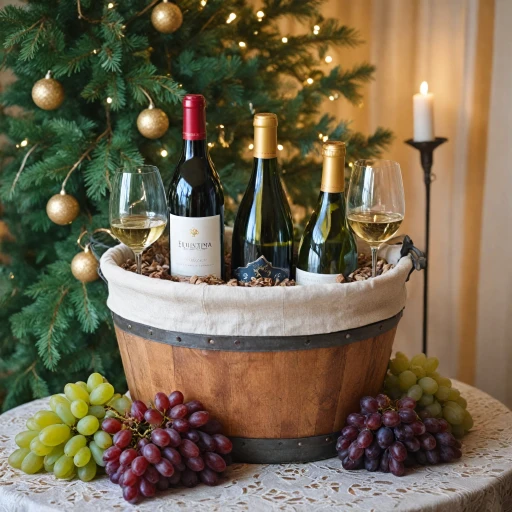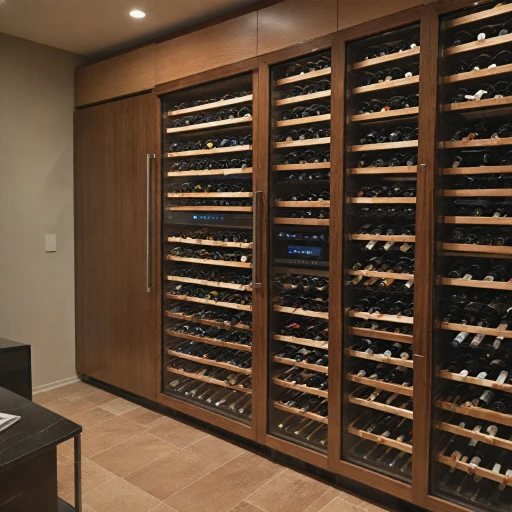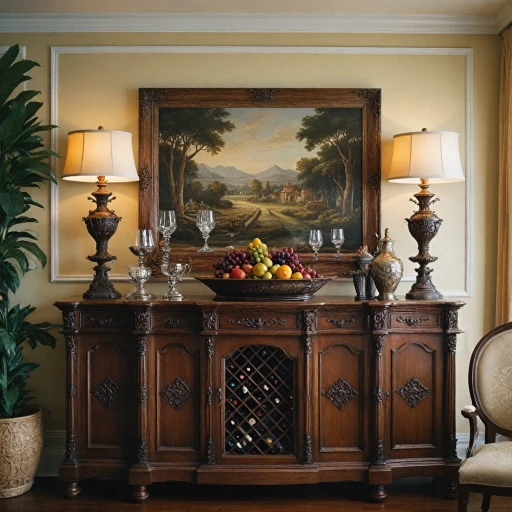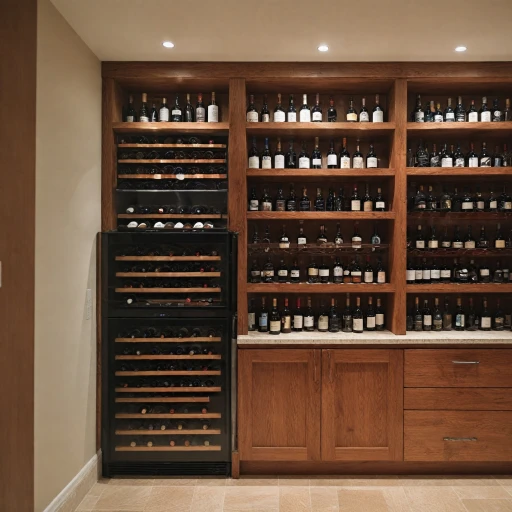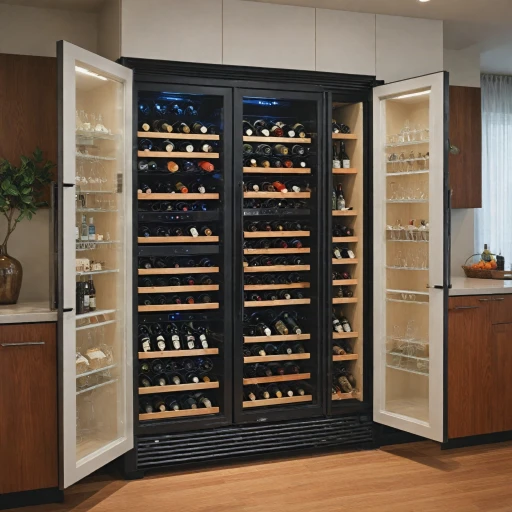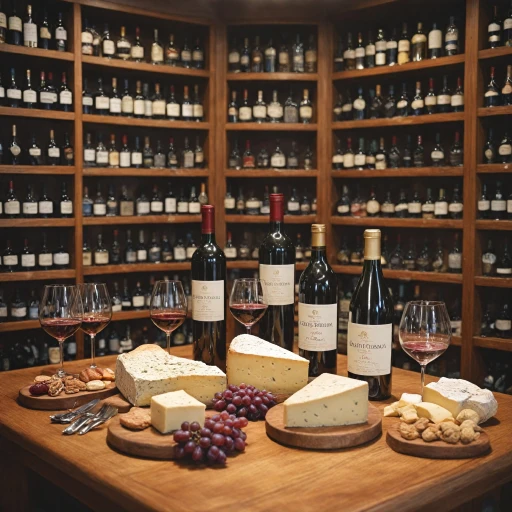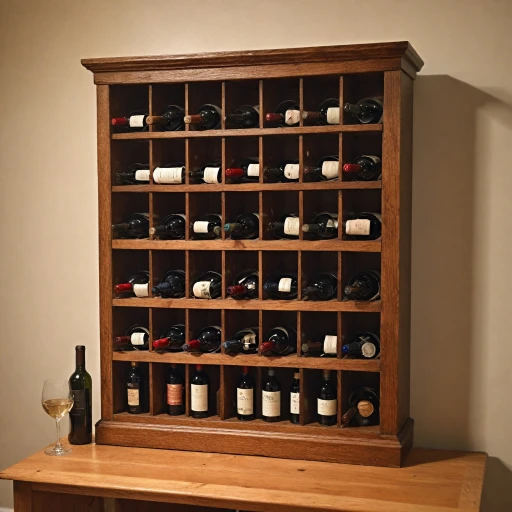
Understanding Wine Decanting
The Intriguing Process of Letting Wine Breathe
Wine decanting is an art form that elevates your wine experience by enhancing its flavors and aromas. The process involves pouring wine from its bottle into a wine decanter, allowing it to mix with the surrounding air. This step is essential especially for red wines, which benefit the most from this oxidation process.
The Role of the Decanter
The design of a wine decanter is crucial. Often crafted from crystal glass, these vessels are not just aesthetically pleasing; they serve a functional purpose. The wide base of the decanter increases the surface area of the wine exposed to air, speeding up the process of softening tannins. This is particularly beneficial for bold red wines, as it allows the complex flavors to unfold.
Why Decanting Matters
During the decanting process, the wine's sediment is left behind in the bottle, providing a cleaner pour. Sediment, often found in older red wines, can taste bitter and affect the overall enjoyment of the wine. By decanting, you ensure a smooth sip free from these particles.
Unlocking Hidden Profiles
While decanting, take the time to observe the wine's behavior. As it interacts with air, you might notice subtle shifts in aroma and taste, revealing intricate layers that were initially hidden. This slow evolution of the wine's profile can transform your experience, making it memorable.
Benefits of Using a Wine Decanter
Unveiling the Advantages of a Wine Decanter
Decanting has been an integral part of wine enjoyment, offering various impressive benefits that elevate your tasting experience. Here's what makes using a decanter invaluable:- Aeration Magic: Allowing wine to breathe by pouring it into a decanter exposes it to oxygen. This process softens tannins, releases aromas, and enhances flavors, especially in young red wines.
- Evoking Elegance: A beautifully designed crystal wine decanter is more than just a functional piece; it is a statement of sophistication and an elegant addition to any wine aficionado's collection. Its glass design not only stands aesthetically pleasing but also reveals the wine's internal play of colors and textures.
- Sediment Separation: Decanting is particularly beneficial when handling aged wines, where sediment can naturally form over time. Pouring wine from the bottle into a decanter allows sediment to stay in the bottle, ensuring a smooth, drinkable pour.
- Amplifies Aromas and Flavors: Letting your wine mingle with air helps to coax out hidden notes and essences that can sometimes linger dormant in the bottle.
- Exploring New Depths: Each decanter and wine combination presents an opportunity for discovery, uncovering unfamiliar facets and complexities in your favorite wine varieties.
Choosing the Right Wine Decanter
Selecting the Perfect Decanter: Key Considerations
When it comes to wine decanters, not all are created equal. Selecting the right piece is crucial in enhancing your wine experience. Here are some factors to consider when choosing the best decanter for your needs:- Design and Material: The decanter's design can affect how efficiently it aerates the wine. A wider base allows for better oxygenation, which is vital when dealing with red wines. Crystal and glass decanters are popular due to their durability and aesthetic appeal. A well-made crystal glass decanter can be a stunning centerpiece.
- Type of Wine: Different wines benefit from varying decanters. Red wines typically require more surface area due to sediment, whereas for more delicate wines, opt for a decanter with a smaller neck to minimize exposure to air.
- Capacity: Consider the volume of the decanter. A standard wine bottle holds approximately 750 milliliters, so ensure your decanter can accommodate this volume without being too cumbersome to prevent spills and ease decoration on your kitchen counter.
- Usability: Consider how easy it is to pour from and clean the decanter. A smooth, non-drip neck design is beneficial, especially when pouring wine at a formal event. Ease of cleaning will ensure longevity and reduce food and wine residue buildup.
Step-by-Step Guide to Decanting Wine
Preparing Your Environment for Decanting
To decant wine effectively, it’s essential to prepare your environment. Ensure you have a clean and flat surface to place your wine bottle and decanter. Tools you’ll need include a crystal glass decanter, a wine bottle opener, and a paper towel or cloth for any spills. Remember, the right conditions set the foundation for achieving the perfect decanting process.Steps to Decant Wine Like a Pro
- Allow the wine to stand: Before you begin, allow your bottle wine to stand upright for at least a few hours. This helps the sediment settle at the bottom, which is particularly important for red wines.
- Open the bottle: Carefully remove the cork using a wine bottle opener. Take a moment to inspect the cork for any moisture or damage, which could affect the quality.
- Pour gently into the decanter: Lift the wine bottle carefully and pour the wine into the decanter at a slow and steady pace. Doing so ensures minimal disturbance of any sediment present. Hold the bottle up so you can watch the inside as you pour.
- Observe the sediment: As you approach the bottom third of the bottle, watch for sediment. If you see it approaching, slow down even more or stop just before the wine becomes cloudy.
Decanting Time Considerations
The time you allow your wine to decant plays a crucial role. Most red wines benefit from at least 30 minutes of aeration in the decanter. However, younger red wine may require an hour or more to fully open up, while older red wines with more delicate profiles might only need a brief decanting period to avoid flavor degradation.Enhancing the Decanter Experience
Choosing the right design of decanter can make a substantial difference in your wine experience. From rounded bases to elongated necks, the decanter's design will influence the aeration process. Opting for a piece made of crystal or high-quality glass can enhance the visual appeal and overall weight, providing a more luxurious experience. Achieving the best outcome from your wine decanting process means understanding how to work with the complexities of each bottle. Remember, practice makes perfect, and each attempt provides an opportunity to further refine your technique.Common Mistakes in Wine Decanting
Missteps to Avoid When Decanting Wine
Decanting wine is an art that requires attention to detail. While it can enhance your wine experience, there are common mistakes that can hinder the process. Here’s a guide to help you avoid these pitfalls.
Rushing the Process
One of the most frequent errors is not allowing enough time for the wine to breathe. Decanting isn't just about pouring wine from the bottle into a decanter; it’s about letting the wine interact with air. This process can take anywhere from 30 minutes to several hours, depending on the wine. Red wines, in particular, benefit from a longer decanting time to fully open up their flavors.
Using the Wrong Decanter
Choosing the right decanter is crucial. A decanter with a wide base allows more surface area for the wine to interact with air, which is ideal for bold red wines. On the other hand, a smaller, more elegant design might be suitable for lighter wines. Ensure your decanter is made of crystal glass for the best results, as it provides clarity and enhances the wine's appearance.
Ignoring Sediment
Another common mistake is not paying attention to sediment. Older red wines and some unfiltered wines often contain sediment that can affect the taste and texture. When pouring the wine into the decanter, do so slowly and steadily, stopping when you notice sediment approaching the neck of the bottle.
Improper Cleaning of the Decanter
Maintaining your wine decanter is essential for preserving the taste of your wines. Residual soap or water spots can alter the flavor profile. After each use, rinse the decanter thoroughly with warm water and let it air dry. Avoid using harsh detergents that can leave a residue.
By avoiding these common mistakes, you can ensure that your decanting process enhances your wine experience, allowing you to enjoy the full spectrum of flavors and aromas your wine has to offer.
Wine Decanter Maintenance and Care
Keeping Your Decanter at Its Best
Proper maintenance and care are crucial to ensure that your wine decanter continues to enhance the taste and presentation of your wines. Given that decanters are often made from delicate glass or crystal, following the right cleaning and storage practices can significantly extend their lifespan and maintain their crystal-clear appearance.
Begin by thoroughly rinsing your decanter after each use to remove any remaining wine and sediment. Using warm water can help dissolve any leftover residue, ensuring a clean surface for future pours. If you're dealing with red wine stains, which are common, a mixture of warm water and a mild dish soap can do wonders. Gently swirl the soapy water around, avoiding abrasive scrubbing that could scratch the glass.
After cleaning, ensure that your decanter is completely dry before storing it. Leaving excess moisture inside can lead to water spots or even mold growth over time. Allow it to air dry on a rack designed specifically for decanters. These racks hold the decanter upside-down, which prevents water from pooling at the bottom.
Handling with Care
When handling your decanter, especially one made from crystal, take care to avoid any sudden impacts or thermal shocks. Rapid temperature changes can severely stress the glass, so allowing your decanter to gradually reach room temperature before pouring wine or cleaning with hot water is advisable.
Storage Tips
For long-term storage, keep your decanter in a cool, dry place away from direct sunlight. Sunlight can fade decorative embellishments, and extreme temperatures could damage the glass. If your decanter came with a box or protective cover when purchased, utilizing it can provide extra protection from dust and scratches.
Adhering to the care steps combined with understanding the art of decanting will ensure your piece remains a beautiful, functional addition to your food and wine experiences. Whether shopping for a new wine decanter or caring for a beloved piece, these tips will help maintain its elegance and functionality.
